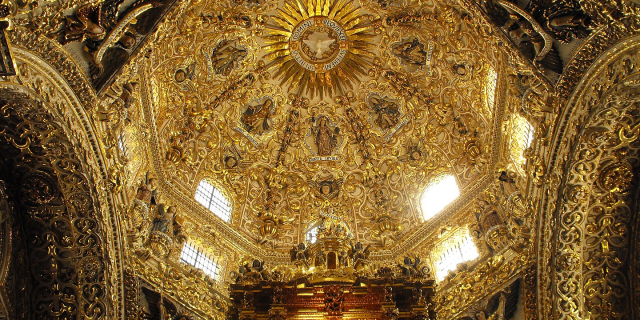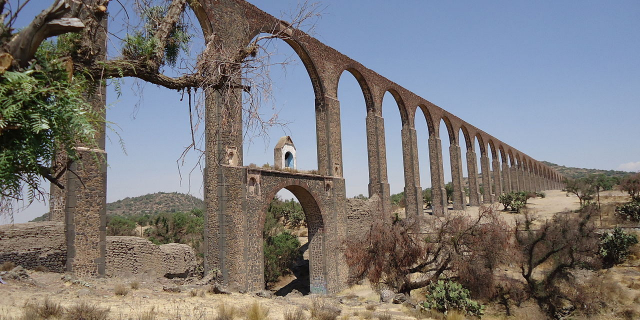Cantona
( Cantona (archaeological site) )Cantona (La casa del sol) is a Mesoamerican archaeological site in Mexico. It is located between 2,450 and 2,600 meters above sea level in the state of Puebla, on the border with the state of Veracruz. The site lies about an hour's drive from the city of Puebla and about an hour and a half from Xalapa, Veracruz. Limited archaeological work has been done at the site. It is estimated that only one to ten per cent of the site can be seen.
At its peak, Cantona was a walled, fortified city with a high level of urbanization. Its original inhabitants are unknown, but it is speculated that it was inhabited by Olmec-Xicalanca groups towards the late Classical Period.
Cantona sat astride an old trading route between the Gulf Coast and the Central Highlands and was a prominent, if isolated, Mesoamerican city between 600 and 1000 CE. It was abandoned after AD 1050.
Its maximum apogee is placed at the epiclassical Mesoamerica period, that is, the period during which ...Read more
Cantona (La casa del sol) is a Mesoamerican archaeological site in Mexico. It is located between 2,450 and 2,600 meters above sea level in the state of Puebla, on the border with the state of Veracruz. The site lies about an hour's drive from the city of Puebla and about an hour and a half from Xalapa, Veracruz. Limited archaeological work has been done at the site. It is estimated that only one to ten per cent of the site can be seen.
At its peak, Cantona was a walled, fortified city with a high level of urbanization. Its original inhabitants are unknown, but it is speculated that it was inhabited by Olmec-Xicalanca groups towards the late Classical Period.
Cantona sat astride an old trading route between the Gulf Coast and the Central Highlands and was a prominent, if isolated, Mesoamerican city between 600 and 1000 CE. It was abandoned after AD 1050.
Its maximum apogee is placed at the epiclassical Mesoamerica period, that is, the period during which Teotihuacan ceased to be the main power center in the region and small regional states sought to gain control of the various trade routes. Cantona was one of these regional centers, and controlled Sierra Madre Oriental resources.
The Pre-Columbian settlement area occupies approximately 12 km², distributed in three units, of which the largest is at the south, with a surface of five km² surface. In Cantona 24 ballgame courts have been discovered, more than in any other mesoamerican site, as well as a series of small pyramids. The Zaragoza obsidian mine is located nearby. It has an elevated Acropolis over the rest of the city in which the main buildings of the city were built. This was used for the ruling elite and priests, and was where the temples of the most important deities where located.
The site comprises a road network with over 500 cobblestone causeways, more than 3,000 individual patios, residences, 24 ball courts and an elaborate acropolis with multiple ceremonial buildings and temples.
These impressive buildings were constructed with carved stones (one atop the other) without any Stucco or cement mortar. Its population is estimated at about 80,000 inhabitants at its peak. It is believed that trade was an important activity. It certainly was built with a definite urban design and walkways connecting each and every part of the city. The "First Avenue" is 563 meters in length. Cantona was contemporary of Teotihuacan.
Its inhabitants were mainly agricultural farmers and traders, particularly for obsidian, obtained from Oyameles-Zaragoza mountains surrounding the city. Additionally, they may have been supplying the lowlands with a derivative of the maguey plant, pulque. After Chichimec's invasions in the 11th century, Cantona was abandoned.
So far, 27 ballgame courts have been found in Cantona, a quantity that symbolizes the power maintained over other peoples by managing the largest ceremonial center of their time, where the losers in the game were slaughtered, a source of pride for the people.






























Add new comment